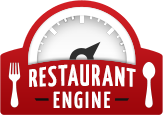America’s Restaurant History – Ever Changing Workforce

Today’s employees have unique needs and desires when compared to past generations.
Restaurants have evolved in many ways over the last century.
What began as purely fine dining establishments in the 19th century for wealthy, upper class patrons transformed in the 1950s to fast food, in the 1960s to casual family dining and chain restaurants.
Today, in 2019, more than one third of Americans dine out on fast food alone, making eating out big business.
In this article, we look at America’s restaurant history, and then we explore the ever changing workforce and how you can keep pace.
Early American Restaurants
During the early days of America, the first restaurants existed in guest houses and pubs. For many they popped up out of necessity.
For example, eating establishments would pop up in frontier towns to feed male workers. They usually involved lodging as well.
Diners would eat whatever was prepared for them and rarely had any choice in the meal. The woman of the house would cook the same thing for her family and her guests.
Later in the 19th century, aristocrats from England and France introduced fine dining that involved china, white tablecloths, and wait staff in tuxedos. Diners ate at private tables and chose what to order from a real menu.
During this time, you’d find men and women in the kitchen from varied races. In the front of the house, you could count on male servers. In addition, these male servers generally served male guests. Women who were alone were not welcome to dine with the men. They either weren’t served, or they ate separately.
Late 19th Century and Early 20th Century Restaurants
An explosion of flavors hit America during these years due to an influx of immigrants and migrant workers.
Also, during this time, the lunch counter came into existence. If you walked into one of these establishments, you might even find women on staff as dishwasher rs and even servers.
The reason? Wartime meant women could fill the men’s jobs while they were at war.
In addition, in the early 20th century, diners were introduced to Chinese-American cuisine. Interestingly, this trend came about due to an immigration loophole. While U.S. immigration laws made Chinese immigration difficult, there was a way around it.
Restaurateurs could enter the U.S. and start their Chinese restaurants. It was quite difficult on the immigrants as employees worked for very low wages in addition to sending money back to China.
Yet another type of cuisine was introduced in the early 1900s as Mexican refugees began selling Mexican food such as tacos and enchiladas.
Finally, in the early part of the 20th century, a wave of Italian immigrants sought haven in American. With them came one of our favorite cuisines straight from Italy. Italian food was now a mainstay of our restaurant history.
Fast Food and the Franchise Restaurant
In the mid-20th century, restaurants introduced fast food to millions of Americans.
This was to be the beginning of a culture shift in dining. Because of this, it became easier for restaurant owners to hire staff. The job was easier because of the assembly line food prep in the fast food arena.
This opened up more opportunities for low skilled workers and workers of color as well as teenagers needing jobs.
Along with fast food came the hottest thing to hit the restaurant industry – the franchise or food chain restaurant.
Drive down any main street in America today, and you’re sure to see a McDonald’s and at least several other chain restaurants.
The fast food chain could make fast, cheap food inexpensively. This caught on, and everyone wanted to do it. Restaurants began popping between 1950-1970. Besides McDonald’s, there was Pizza Hut, Kentucky Fried Chicken, and more.

Casual dining brings more families into restaurants during the week.
Casual Dining
Americans were working longer and harder in the 1990s. What’s more, more women were hitting the workforce.
This created a change in American’s eating habits and our restaurant history. Families were eating together less and less, and casual dining restaurants like Olive Garden and Applebee’s hit the scene.
Catering to middle class families with two working parents, these restaurants were priced well and allowed families to eat in a more casual atmosphere but a step above the fast food restaurant.
Farm to Table
Today we have the farm to table movement and the drive to more sustainable eateries who use local and organic ingredients.
Americans today want to know where their food comes from.
This is yet another shift in America’s restaurant history. With all this history in mind, let’s look at the ever changing workforce.
The Restaurant Workforce Through the Years
In the beginning, the workforce was predominantly men. In frontier towns, you might find a woman preparing a meal in a guest house.
Today, you’ll find men and women, and people of all races working in the back of the house as well as the front of the house. Immigrants and young workers tend to make up the biggest part of the workforce.
One of the biggest struggles for restaurant owners is taking care of the employees in a more equal fashion. For example, there is still a huge disparity between front and back of the house wages. (tweet this)
The often sought after $15 minimum wage is also something to consider as a restaurant owner. This might be a difficult pill to swallow for restaurants, but it’s a good time to reconsider how to pay your team. Do what you can to offer a living wage.
Your workforce is also impacted by new technology, especially in the way of software and point of sale systems. Your staff might shrink as they are needed less and less.
Hiring and Retaining a Diverse Workforce
Today’s job market is tight. It’s an employee’s market, making it increasingly difficult for restaurants to hire and retain staff.
So, what can you do to entice people to work for your restaurant?
First, you can offer employees full time work. Many of your team members have other people to support and working part time in a restaurant can be hard if they have bills to pay.
Next, you can use technology to help you scheduled, train, and retain your staff. Make it easy for team members to pick and switch shifts. Adapt to the changing workforce of the 21st century that wants flexibility and accommodation.
Because restaurant work is often difficult and involves long hours, consider being more accommodating to your team. Restaurants often experience high turnover, and this is unfortunately a sign of our times. So, do what you can to treat your staff well by offering unique benefits to increase retention.
It is also a good idea to provide ongoing training to your employees. This not only shows them you care but offers them training on customer service as well as sales.
Training makes more loyal employees who will be less likely to leave their jobs. This is a win-win for you both.
To Conclude
America has a rich restaurant history, and the workforce has evolved over the years.
To stay on the cutting edge, take care of your employees, pay them well, train them, and offer benefits to increase your retention rates and propel your restaurant into the future. (tweet this)
At Restaurant Engine, not only do we create great, responsive websites, but you can count on us to create a website that drives business to all your restaurants and edges you above the competition by using mobile-friendly design with a terrific user experience. Ready to take the plunge and create a website with an online menu, blog and beautiful photos? Get your free website consultation today!
Images: Mario Gogh and Spencer Davis on Unsplash


Leave a Reply